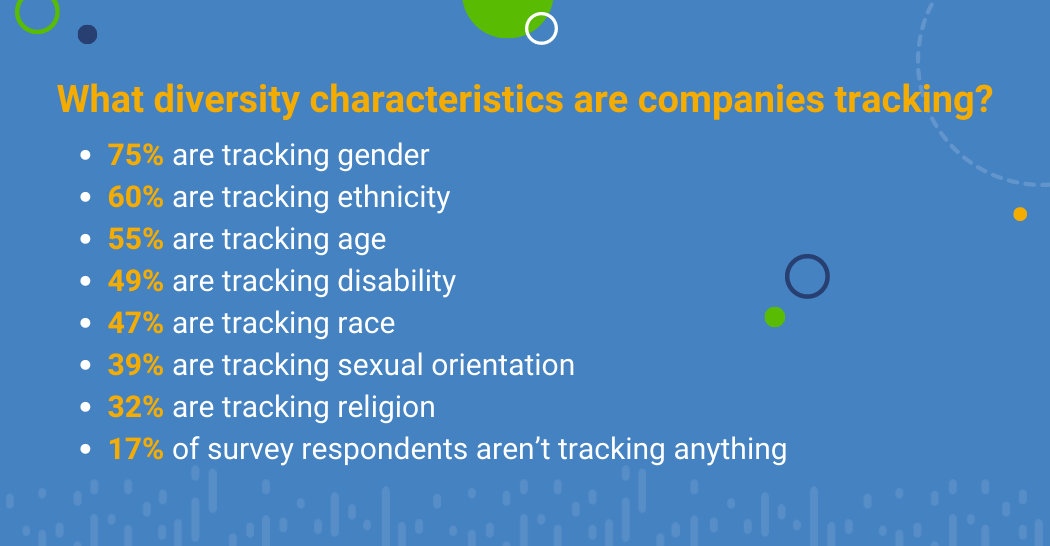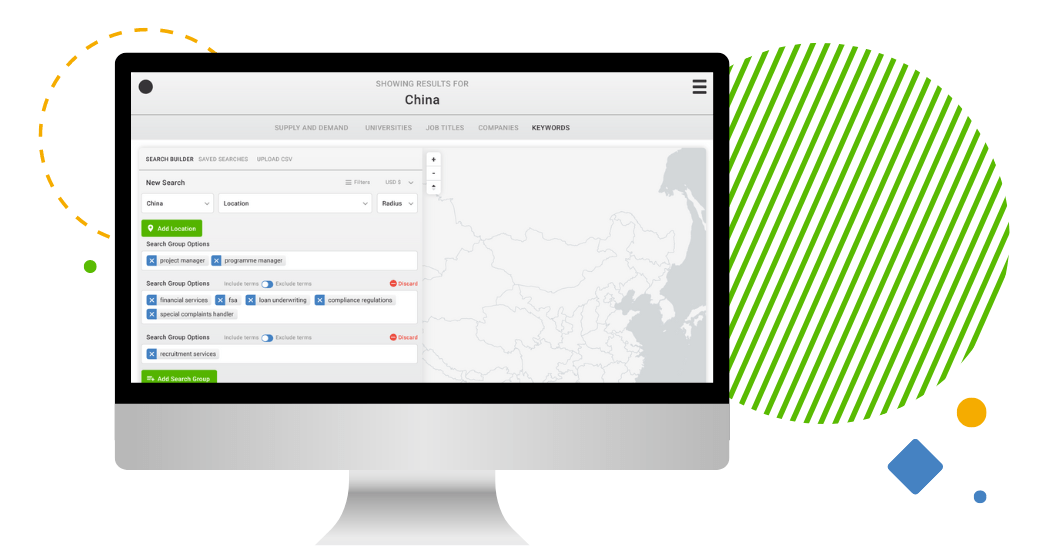The way we measure DEI success is changing. With a greater focus on diversity, equity, and inclusion (DEI), organizations are reevaluating how they define and track progress. The traditional methods for assessing DEI success--like looking at the percentage of women or people of color in senior leadership positions--are no longer enough.
Companies need to track diversity metrics to assess their DEI efforts effectively. But which ones? And why? In this blog post, we'll explore emerging trends in diversity analytics and what they could mean for your organization. Stay tuned!
Emerging Diversity Analytics: Who is Tracking What? And Why? See what our Survey says is being tracked in 2023
Companies are increasingly tracking diversity metrics to ensure that their workforce reflects the communities in which they operate. This includes collecting data from a variety of sources, such as HRIS and ATS systems, census tools, self-declaration forms, spreadsheets, Power BI, and custom internal tools. Perhaps the only thing missing from the modern HR leaders’ toolbelts is accurate labor market data and proper diversity analytics, which reflect the area wherein they’re recruiting.
By collecting data on gender, ethnicity, and other aspects of diversity at onboarding and recruitment points, companies can identify any gaps in representation and make informed decisions about improving workplace diversity.
Download the Full Survey Results
Companies Are Tracking Various Diversity Metrics To Ensure They're Hitting DEI Goals
Many companies realize the importance of diversity in the workplace and know that tracking DEI goals is essential to ensure fairness and equity. To help them do this, they monitor various diversity metrics, such as representation by gender or race/ethnicity across departments, retention rates, and recruitment numbers.
Not only will these metrics provide insight into a company's progress toward meeting DEI goals but also into areas that need improvement. As businesses strive to create a more diverse workplace, tracking these metrics will become increasingly important in ensuring every employee feels valued, respected, and represented regardless of who they are.
The Most Common Metric Tracked Is Gender, Followed By Race, And Ethnicity
One of the most common is gender diversity, and this metric allows businesses to understand how represented different genders are in their workforce.
Following that, race and ethnicity also provide key insight into the racial picture at a company across all roles. This metric gives visibility into who is employed and areas for improvement based on the desired DEI goal.
Organizations are increasingly recognizing the importance of tracking diversity metrics. In a recent survey that Horsefly took of HR and Talent Acquisition professionals, 75% of respondents reported that they are tracking gender in their workforce. Additionally, 60% of companies indicated that they were monitoring ethnicity, and 55% said they were tracking age.
Many diversity hiring initiatives are now widely monitored in the corporate world, such as disability and race. But one metric that's often overlooked is sexual orientation. In fact, our recent survey reported that nearly 40% of businesses had implemented diversity-oriented systems to better measure this demographic data--a step forward in advocating diversity and beyond just tracking race and disability.
Furthermore, religious beliefs may be something companies should consider taking into account since 32% are already monitoring it. Although 17% of organizations still need to start tracking diversity metrics, there's undeniable progress toward achieving increased diversity among the workforce!

What Metrics Come Next?
Companies recognize the diversity of their workforce more and more, and new metrics are being implemented to measure effectiveness and ensure progress toward reaching DEI goals. Beyond traditional metrics such as gender diversity, companies track other aspects such as age, religion, sexual orientation, and disability status. This helps to provide an even more comprehensive understanding of a company's strengths and weaknesses when it comes to DEI—and with that information, companies can better identify areas for improvement to cultivate a truly diverse workplace where everyone feels valued.
Tracking these metrics helps companies identify areas where they need to improve their DEI efforts.
Achieving Diversity, Equity, and Inclusion (DEI) goals requires companies to track specific metrics so that they can measure their progress. By looking deeply into areas like employee recruitment, hiring practices, internal promotions, and more – companies can use diverse metrics to identify gaps in their DEI efforts and focus on improving them. By having instant access to labor market data, diversity analytics, and workforce insights to compare internal metrics to, companies can move one step ahead into a truly proactive DEI program that also impacts business planning.
Not only does tracking the right metrics help businesses stay informed on their current performance – it also sends an important message that DEI is integral to their values as a company. After all, when companies work hard to tackle these often complex issues head-on, everybody wins!
To Equality and Beyond
It also allows them to see their progress toward their goals and hold themselves accountable for results. Creating diversity metrics for companies is a crucial step towards reaching DEI goals and is just as important as setting them in the first place! Not only do they offer an objective way to measure progress, but they also allow organizations to stay accountable and motivated to reach their targets.
It may be intimidating to start tracking this data, but it can open doors to greater internal and external success. Companies should strive beyond the basics like gender and race and focus on other aspects of diversity that may not initially come to mind, such as sexuality or religious backgrounds. Ultimately, having a collection of accurate metrics helps paint a clearer picture of a business's commitment to DEI initiatives.
Analyzing diversity hiring data has never been easier with the right technological tools at companies' fingertips. Diversity metrics can be monitored in real-time with powerful systems like Horsefly and ATS to gain insight into workforce diversity over time.
Additionally, CVs from applicants and manually tracking processes enable organizations to understand where improvements must be made, while HR databases provide headcount reports at onboarding featuring diversity readings. All these strategies provide a valuable diversity hiring strategy for any organization looking to deepen its analysis of diversity progress.
Want to learn more about hiring for diversity using diversity analytics and labor market data? Download the full survey now or book your free consultation with Horsefly Analytics today.
